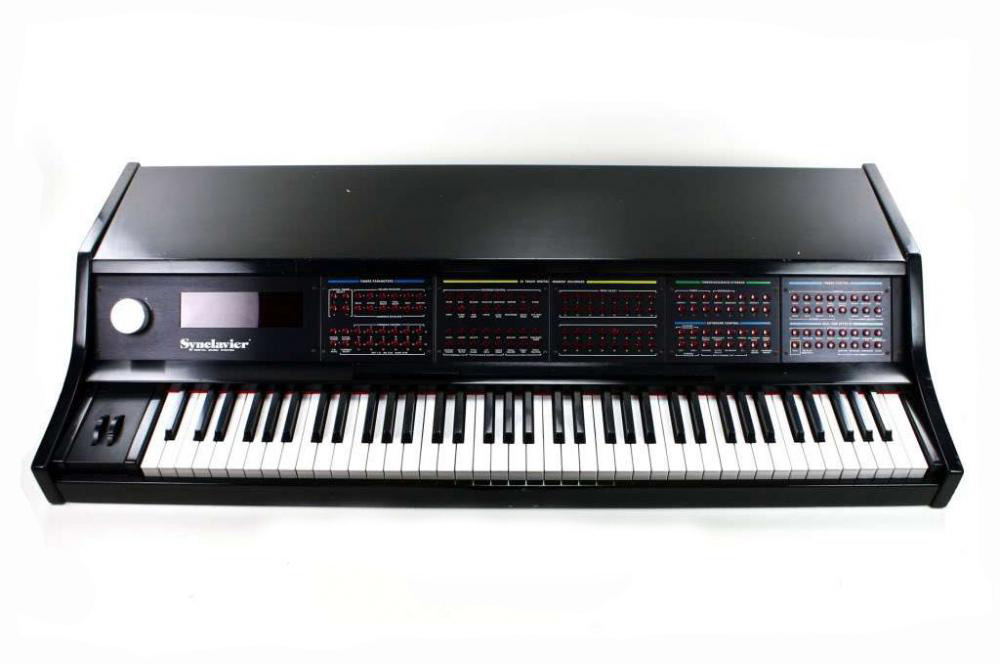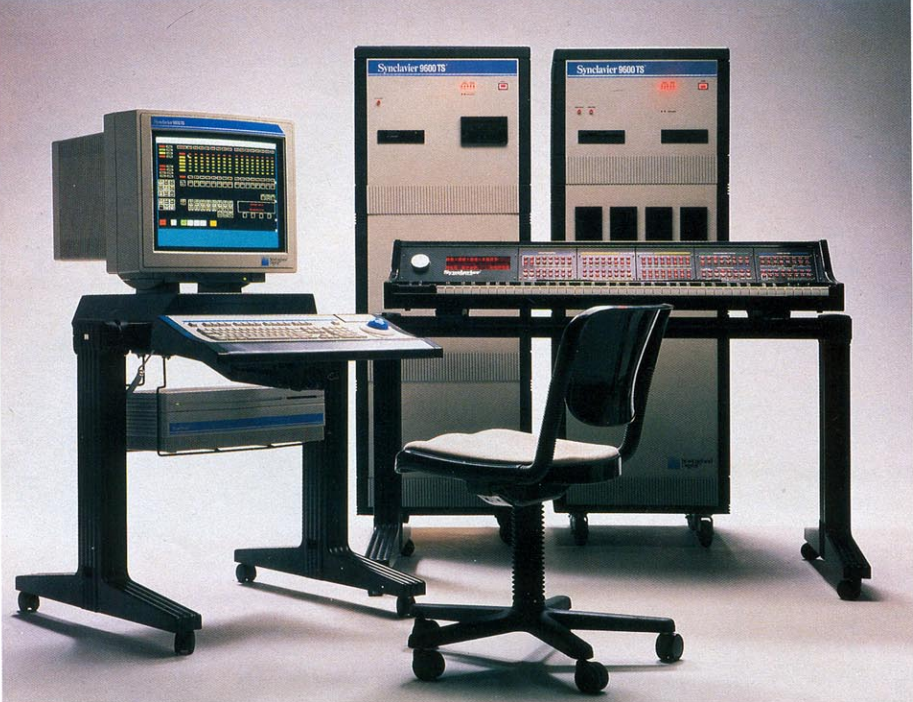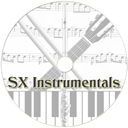Filter on ALL, SYNTH, DRUM, SAMPLER or MISC |
Total list currently 2405 items in 330 Brands |
New England Digital | Synclavier PSMT |
Description | In 1984 a third model was introduced and became the most infamous version of the line-up. The new features included a full sized and weighted keyboard with velocity and aftertouch which replaced the previous model's plastic keyboard, and 128 voices polyphony. An optional DSP effects package including time compression/expansion was available for the Synclav as well. There was also a standard onboard arpeggiator and a robust sequencer with up to 200 tracks and its sampler had the ability to record and output at up to 100 khz! The typical Synclavier system consists of a durable 76-note keyboard (Velocity/Pressure Keyboard (VPK, c.1984), a weighted velocity/after-pressure sensitive musical keyboard controller, was introduced. This had a black piano lacquer finished chassis, a larger display, additional buttons and a silver control wheel.) peppered with 132 illuminated buttons and a single control knob, connected to a rack-mounted CPU running NED's own 16-bit ABLE operating system plus the nostalgic mid-eighties looking mono-chromatic computer monitor/keyboard. Patches, sound files, sequences and samples are stored to 5.25" diskette, hard disk or in some models, magneto-optical drives. A faster ABLE Model C processor based system, with a new 'Multi-Channel-Distribution' real-time digital controlled analog signal routing technology, and 16bit RAM based stereo sampling subsystem. The monaural FM voice card was doubled up and enabling software panning for stereo output was introduced. It should be noted that there are all sorts of 'sub-revisions' of the hardware component of the Synclav II, and these make each version capable/incapable of doing certain things. Some lower-end versions are not capable of using the 'Timbre-frame' timbral scanning programming method. Others are not capable of handling a MIDI retrofit. And all of these have different 'top versions' of the OS that they can handle, making the purchase of a used Synclav system a dicey affair. You can't always be 100% sure of which variation you're buying without some extreme care being paid to which hardware it has and what versions of the OS it's capable of running. You could therefore be buying anything from a high-end sampling/sequencing workstation unit to a rather complex 12-op FM/additive synth, and several possibilities in between. From its specs alone it can be seen that the Synclavier is a masterpiece digital sampler / synthesizer workstation which was the first of its kind, and way ahead of its time. They command prices well into the thousands ($25,000 to $200,000) and are only used by those who can afford such. New Synclavier systems service, and support are available through "DEMAS", the company created after the fall of New England Digital in 1992. Additional service and support can also be found at "Synhouse" and "Synclavier European Services". |
| Brand | New England Digital |
| Model | Synclavier PSMT |
| Device | Synth |
| Type | Keys |
| Engine Type | Digital |
| Engine | Sample, FM |
| Voices (max) | 128 |
| Multitimbral | 64 |
| LFO | Noise, Saw Up, Saw Down, Sine, Square, Key Sync, Phase |
| Engine Detailed | 12-op FM Synthesis 8-bit mono Later models stereo, additive, resynthesis, sampling |
| Sampler | 16 bit, 100kHz stereo variable sampling rate |
| Filter (VCF) | 24dB Slope (4-pole), Band Pass, High Pass, Low Pass |
| Envelope (VCA) | Delay, Attack, Decay, Decay 2, Sustain Level, Release |
| Memory | 32MB RAM (expandable to 768), External Hard Disk (unlimited) |
| Recording | Up to 200 tracks |
| Keys | 76 |
| Key type | Keys |
| Velocity | Y |
| Aftertouch | Poly |
| Audio | 4 Stereo out |
| Midi | I-O |
| Produced: | 1984 - 1993 |
| Legend: | Obvious | Y: Yes, N: No, N/A: Not Applicable | |
| VCO | Voltage Controlled Oscillator | DCO | Digital Controlled Oscillator |
| LFO | Low Frequency Oscillator | Sub | Sub Oscillator |
| VCF | Voltage Controlled Filter | VCA | Voltage Controlled Amplifier |
| Velocity | As with a piano, the harder you hit a key, the louder the sound, unlike most organs which always produce the same loudness no matter how hard you hit a key. | Aftertouch | Pressing a key after you activated it. Channel Aftertouch, no matter which key, it will send a Channel message. Poly Aftertouch, sends the pressure per key instead of the whole channel. |
| Values for OSC, LFO, Filter, Envelope are per voice unless stated otherwise. | |||




